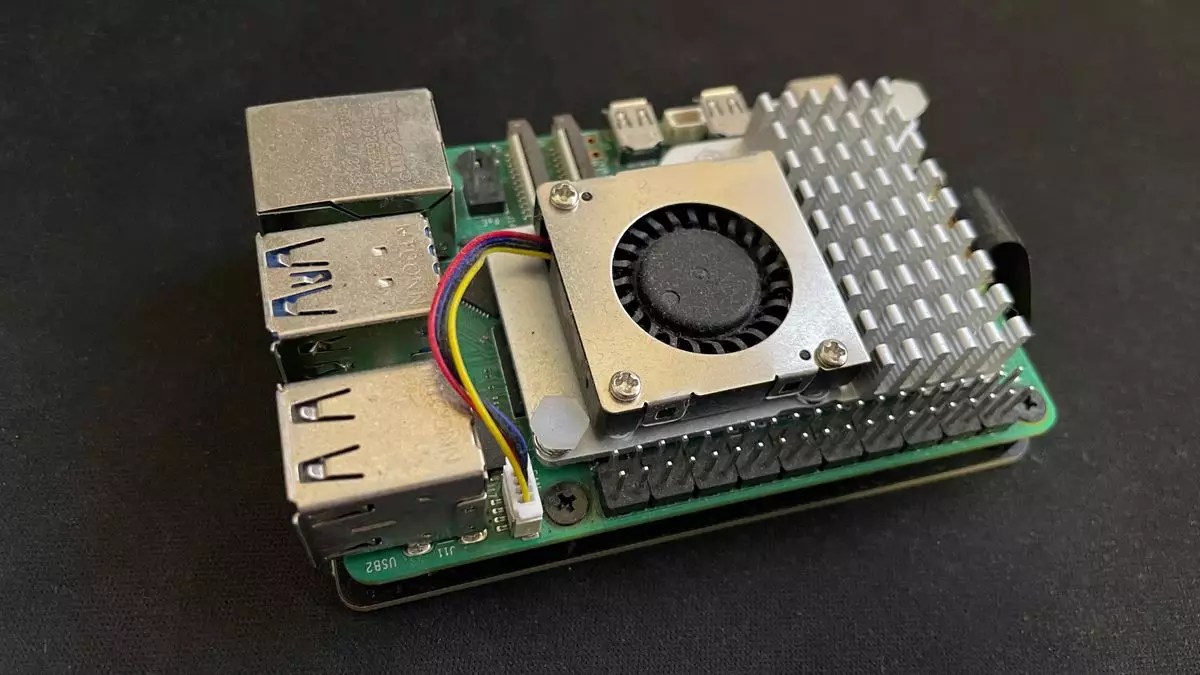The Raspberry Pi has long been a staple in the world of single-board computers (SBC), known for its versatility and affordability. The latest iteration, the Raspberry Pi 5, which debuted in 2023, has piqued the interest of tech enthusiasts by introducing features that elevate it from a hobbyist’s tool to a credible contender in the desktop PC realm. One of the most notable and game-changing additions is its support for PCIe drives. This new capability opens a plethora of opportunities for users keen on repurposing the Pi 5 into a powerful desktop for various applications, including gaming.
The inclusion of PCIe support in the Raspberry Pi 5’s architecture represents a pivotal change. Traditionally, Raspberry Pi boards relied heavily on MicroSD cards for storage, a method that, while convenient, has inherent limitations in terms of speed and reliability. The potential to connect high-speed SSDs via PCIe is a significant shift, providing users with the prospect of faster boot times, improved load speeds, and the overall enhanced performance that comes with solid-state drives.
In the initial months following its release, the Raspberry Pi Foundation faced scrutiny as no official SSD solutions were available. Early adopters were left to explore third-party options, like the Pimoroni NVMe Base, to create effective storage solutions. The anticipation surrounding an official offering was palpable, and the announcement of official Raspberry Pi SSDs and kits, capable of pairing with the new M.2 HAT+, marks a thrilling development for users looking to optimize performance and functionality.
In terms of performance, the Raspberry Pi 5 has been regarded as a significant upgrade over its predecessor, the Pi 4, especially when utilized with active cooling solutions. When rigged to run games like Doom 3 at modest resolutions, the Pi 5 surprisingly managed playable framerates, proving itself capable of tasks that many previously considered outside its scope. However, the reliance on MicroSD cards limited its true potential.
The introduction of official SSD support changes the narrative entirely. With storage speed no longer an impediment, users can now fully exploit the board’s capabilities. The SSD’s faster read/write speeds translate to enhanced system responsiveness and data stability, enabling tasks ranging from basic web browsing to more intensive applications like casual gaming to be executed with greater ease and efficiency.
Moreover, the ability to overclock the Pi 5’s PCIe to access PCIe 3.0 speeds by modifying the Pi’s config file—a relatively straightforward process—offers another level of customization for power users. This ability to boost the system’s performance helps users tap into the full potential of the new hardware, thus transforming the Raspberry Pi 5 into a more viable desktop option.
The affordability of the new official SSDs also plays a vital role in their attractiveness. Raspberry Pi Ltd has priced the entry-level 256GB drive at $30, while the 512GB variant is priced at $45. These competitive price points, paired with the additional kit options—which include the essential M.2 HAT+—make upgrading straightforward and economical. This accessibility encourages more users to explore the capabilities of the Raspberry Pi 5, whether for general computing or as a dedicated gaming station.
As the Raspberry Pi ecosystem continues to grow, the official SSDs will likely enhance user experience by simplifying the decision-making process for purchasing compatible hardware. Early users who had to navigate the sometimes convoluted world of third-party providers can now focus on the excitement of building their projects without the overwhelming worry of compatibility issues.
For gamers, the implications of this new capability are particularly interesting. As interest in retro gaming rises, utilizing the Raspberry Pi 5 as a platform for systems like Retropie or Recalbox has become an appealing option. The SSD can house a collection of retro titles more reliably than traditional storage solutions, enhancing the gaming experience with instant loading times and smoother performance.
Furthermore, the exploration of options like external GPUs to facilitate even more demanding gaming experiences highlights the cutting-edge direction the device can take. The combination of desktop PC features with gaming capabilities not typically associated with a single-board computer is poised to attract an entirely new demographic of tech enthusiasts.
The Raspberry Pi 5’s PCIe capabilities and the advent of official SSD offerings represent a potential revolution for the platform. With unparalleled performance, affordability, and versatility, the recent advancements solidify the Raspberry Pi’s place not merely as a hobbyist’s curiosity but as a genuine alternative for desktop computing and gaming.


Leave a Reply